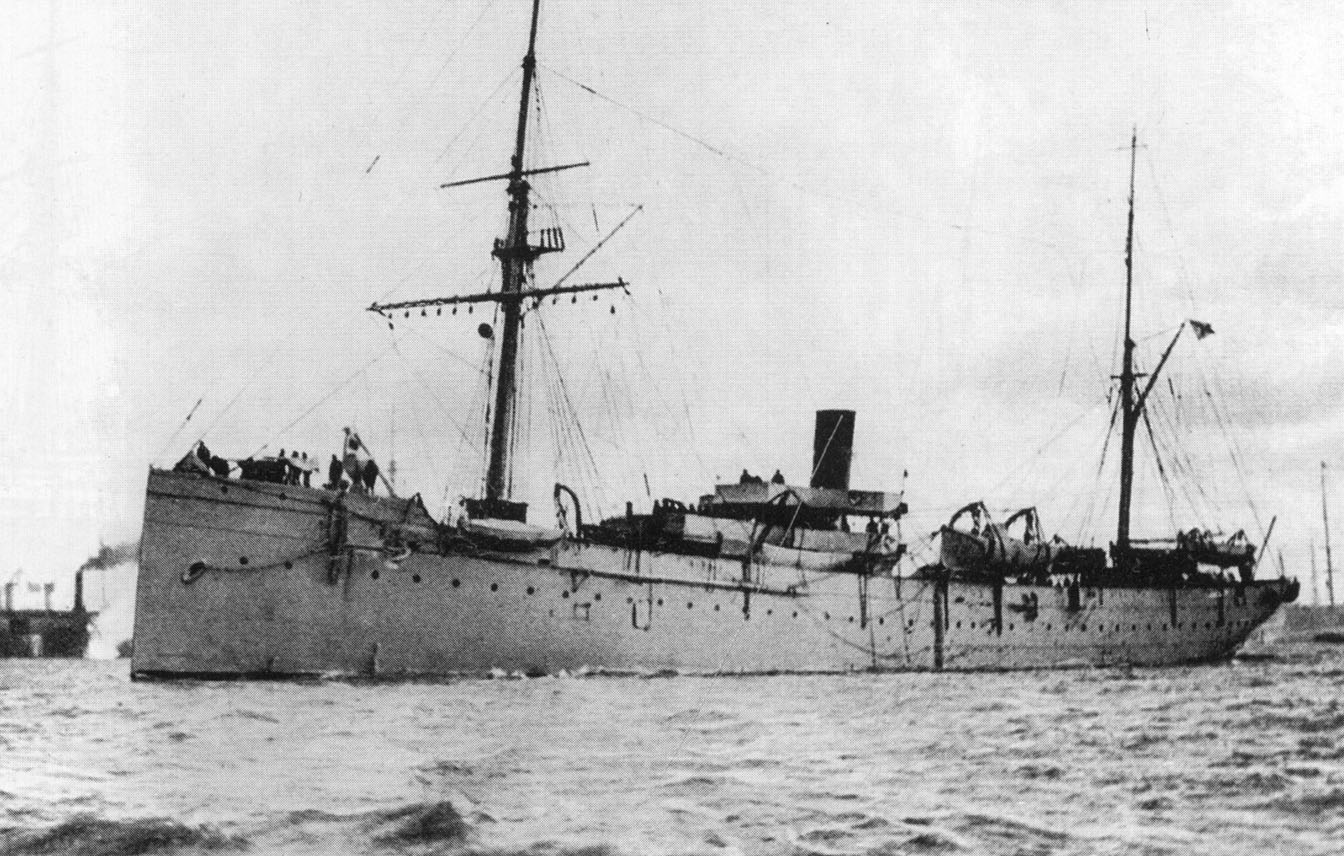Russian Cruiser Afrika on:
[Wikipedia]
[Google]
[Amazon]
 ''Afrika'' (Russian - ''Африка'') was a sail- and steam-powered second-class cruiser of the
''Afrika'' (Russian - ''Африка'') was a sail- and steam-powered second-class cruiser of the
 ''Afrika'' (Russian - ''Африка'') was a sail- and steam-powered second-class cruiser of the
''Afrika'' (Russian - ''Африка'') was a sail- and steam-powered second-class cruiser of the Imperial Russian Navy
The Imperial Russian Navy () operated as the navy of the Russian Tsardom and later the Russian Empire from 1696 to 1917. Formally established in 1696, it lasted until being dissolved in the wake of the February Revolution and the declaration of ...
. She was 2775 tonnes, 83 m long, 11.06 m in the beam and had four boilers powering a single vertical triple expansion steam engine. Her maximum speed was 12.75 knots, whilst her crew was 148 sailors and 12 officers. Those who served aboard her included Alexey Abaza and Hans William von Fersen
Hans William Freiherr von Fersen (6 May 1937) was an admiral in the navy of the former Russian Empire.
Biography
Fersen was born into a Baltic German family in what is now Estonia. From his mother's side, he has Scottish ancestry, as his matern ...
.
Built by John Roach and Sons at the Delaware River Iron Ship Building and Engine Works shipyard in Chester, Pennsylvania
Chester is a city in Delaware County, Pennsylvania, United States. It is located in the Philadelphia metropolitan area (also known as the Delaware Valley) on the western bank of the Delaware River between Philadelphia and Wilmington, Delaware. ...
, she was launched in May 1877 under the name ''Saratoga''. She was acquired by Russia exactly a year later for $335,000 and sailed for Europe on 29 December 1878 under her first captain Yevgeni Ivanovich Alekseyev
Yevgeni Ivanovich Alekseyev or Alexeyev (; b. – d. May 27, 1917) was a Russian admiral in the Imperial Russian Navy, viceroy of the Russian Far East, and commander-in-chief of Imperial Russian forces at Port Arthur and in Manchuria dur ...
. She anchored at Kronstadt
Kronstadt (, ) is a Russian administrative divisions of Saint Petersburg, port city in Kronshtadtsky District of the federal cities of Russia, federal city of Saint Petersburg, located on Kotlin Island, west of Saint Petersburg, near the head ...
in summer 1879 to have her armament installed - this became her home port. These were five 152 mm guns, four 107 mm guns and 25.04 mm guns. She was accepted into the Russian fleet on 1 February 1879. In 1882 geographers aboard her surveyed parts of the Kamchatka Peninsula
The Kamchatka Peninsula (, ) is a peninsula in the Russian Far East, with an area of about . The Pacific Ocean and the Sea of Okhotsk make up the peninsula's eastern and western coastlines, respectively.
Immediately offshore along the Pacific ...
, naming its easternmost point Cape Afrika after the ship.
Her second captain Fyodor Vazsilievitch Dubasov was appointed on 2 November 1883. New boilers were installed in winter 1891–1892. In 1898 two torpedo tubes were added and her third captain was appointed, Nikolai Dmitrievitch Dabitch, who held the command until 1900. Also in 1898 admiral Alexei Popov made the first Russian naval wireless telegraphy transmission from ''Afrika'' to the transport ship ''Europe''. In March 1906 she was converted into a naval school, before being permanently anchored in October 1918. She was attached to the Baltic Fleet in December 1920 for use as a transport ship and floating artillery depot, before being sold for scrap to Germany in September 1923.
References